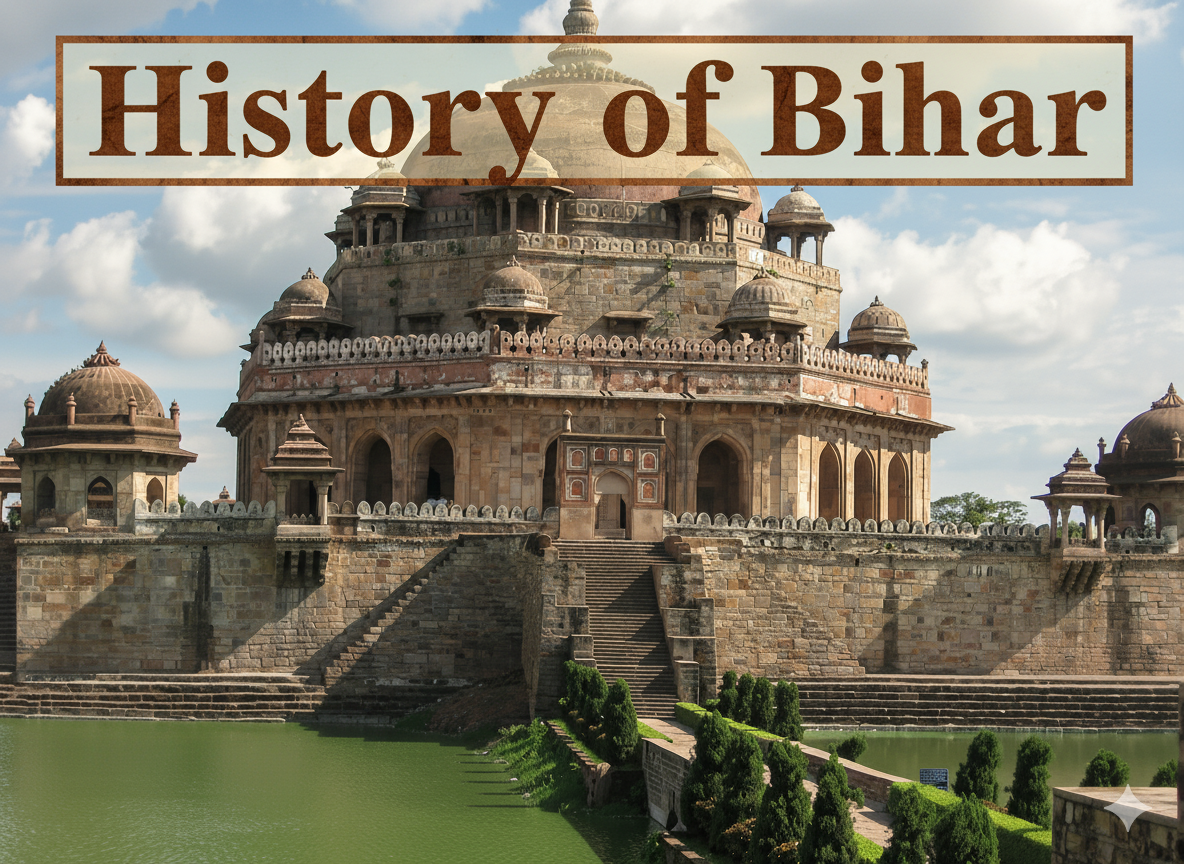
history of bihar
Introduction: Understanding the History of Bihar
The history of Bihar is one of the most fascinating and influential chapters in India’s journey. Known as the cradle of ancient Indian civilization, Bihar has been the land of great empires, scholars, and spiritual leaders. From the rise of the Maurya and Gupta dynasties to the birth of Buddhism and Jainism, Bihar has played a central role in shaping India’s cultural, religious, and political landscape.
Ancient Civilization and the Birth of Empires
The history of Bihar dates back to the Vedic period, when the region was known as Magadha, one of the sixteen Mahajanapadas (great kingdoms) of ancient India. Magadha emerged as a powerful center under kings like Bimbisara and Ajatashatru. Later, the Maurya Empire, founded by Chandragupta Maurya in the 4th century BCE, turned Bihar into the heart of Indian politics.
Under Emperor Ashoka, the Mauryan dynasty reached its peak. After witnessing the devastation of the Kalinga War, Ashoka embraced Buddhism, and Bihar became a global center for Buddhist learning. The Nalanda University, one of the world’s oldest universities, was established in this era, attracting scholars from across Asia.
Bihar – The Land of Buddha and Mahavira
An essential part of the history of Bihar revolves around the birth of two major religions — Buddhism and Jainism. Lord Buddha attained enlightenment under the Bodhi tree in Bodh Gaya, located in modern-day Bihar. Similarly, Lord Mahavira, the 24th Tirthankara of Jainism, was also born in Bihar. These events made the region a hub of spirituality and peace, drawing millions of pilgrims every year.
The Golden Age: Gupta Dynasty and Cultural Advancement
The history of Bihar also witnessed the glorious rule of the Gupta Empire (4th–6th century CE), often referred to as the Golden Age of India. This period saw remarkable progress in art, literature, mathematics, and science. Great scholars like Aryabhata, who invented the concept of zero, and Kalidasa, the legendary poet, flourished during this era. Bihar became synonymous with knowledge, culture, and intellectual brilliance.
Medieval Period and the Decline of Power
In the medieval phase, the history of Bihar saw the decline of ancient universities and the rise of new powers. The Pala dynasty revived Buddhist influence, but after their fall, invasions from the Delhi Sultanate and the Mughals changed Bihar’s political scenario. The region lost its old grandeur, but its cultural identity remained strong. Bihar continued to be a symbol of resilience and tradition despite numerous political challenges.
Bihar in the Freedom Struggle
The history of Bihar took a new turn during the British colonial era. It became a significant center of the Indian freedom movement. The Champaran Satyagraha of 1917, led by Mahatma Gandhi, was one of the first major movements against British rule. Leaders like Dr. Rajendra Prasad, India’s first President, and Jayaprakash Narayan, known for his call for “Total Revolution,” were born in Bihar. Their leadership made Bihar a beacon of patriotism and courage.
Modern Bihar: From Ancient Glory to Development
Post-independence, the history of Bihar continued to evolve. Although the state faced economic and political challenges, recent years have seen growth in education, infrastructure, and governance. The government has focused on reviving tourism around Bodh Gaya, Nalanda, and Rajgir, promoting Bihar’s ancient heritage globally.
Today, Bihar stands as a mix of ancient glory and modern ambition, preserving its traditions while embracing progress. The people of Bihar take immense pride in their rich past and are working tirelessly to make the state a powerhouse of education and culture once again.
Conclusion: Bihar’s Timeless Legacy
The history of Bihar is not just the story of a state but the story of India itself. It represents the rise of civilization, the spread of knowledge, and the pursuit of enlightenment. From the Mauryas to the Guptas, from Buddha to Gandhi, every era of Bihar has contributed to India’s soul. As Bihar continues to evolve, its historic heritage remains a source of inspiration for generations to come.







